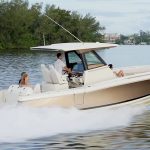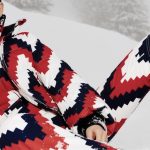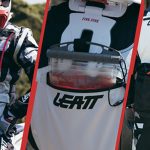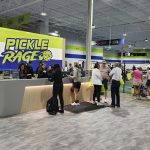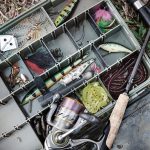For those in the footwear industry with an aversion to boisterous crowds and small, enclosed spaces, the recently concluded WSA show-which was strewn throughout the entire three halls of the Las Vegas Convention Center, as well as in suites at the Venetian Hotel-was just the place to visit. The continuing defection of major exhibitors, combined with the vast acreage of the events footprint, markedly dampened the shows energy level.
The situation promises to worsen for the next WSA show in February 2009 as Deckers, owner of the Teva, Ugg, Simple and Tsubo brands, and Vasque/Red Wing lead the list of major exhibitors that plan to withdraw from future WSA shows. Similar official announcements from other athletic and outdoor vendors – that readily admit to being enamored with the increasingly popular and bustling Outdoor Retailer show – are sure to follow.
Despite the subdued atmosphere, WSA did highlight some key trends for Spring 2009, exemplified by a blurring of the lines between categories and a solid trend toward hybridization.
The Casual/Lifestyle business, which encompasses both outdoor and athletic influences, continues to thrive. Here, comfort technologies-including improved cushioning and breathability-along with cleaner, more sophisticated looks, are key. While still important, vulcanized shoes are not as strong as in past seasons and are now skewing toward a younger teen and pre-teen audience. In the mens casual athletic market, preppy, clean looks are strong; on the casual outdoor side, surf-inspired, deconstructed slip-on footwear is becoming much more widespread. In the womens casual athletic realm, the emphasis is on brightly colored sneakers (yes, pink is still big), as well as prints and patterns; on the casual outdoor side, Mary Jane styles, in both sleek urban and trail-friendly versions, are especially popular.
Multi-Sport Footwear continues to be a growth category, especially in the outdoor lifestyle arena. Many vendors also report that “shandals” (a shoe/sandal hybrid based on the classic fisherman silhouette) promise to be strong sellers for Spring and Summer 2009 due to their versatility and comfort.
In the Kids market, many vendors are offering product designed specifically for children rather than simply producing takedowns of adult shoes. Kid-friendly design features include easy-to-use closure systems; flex patterns and cushioning materials that accommodate small, growing feet; and fun, bright colors and patterns on uppers and sidewalls.
In the realm of Materials and Treatments, rich, soft leathers, natural fibers such as organic cotton and wool, and texturally interesting embellishments in the form of embroidery, overlays and closure systems, help attract consumer attention and add interest to the shoe wall. In addition, comfort and cushioning technologies, which are a given in performance footwear, are now must-haves in every shoe category.
Eco-Friendly Footwear – encompassing product as well as manufacturing processes and packaging – continues to evolve. Key features include the use of natural, organic and recycled fabrics and rubbers, vegetable-tanned leathers, and decreased use of glues and solvents (resulting in more interesting stitching patterns).
Of course, many exhibitors used the WSA show to launch new initiatives and product lines.
Business at Ahnu continues to be positive, with president and co-founder Jim Van Dine reporting, “The company is just ahead of plan. We exceeded our first-half plan by 10%, and the original plan was to more than double the business.” He adds, “Ahnu had great success at Nordstrom and REI. Paragon [in New York City] was also a big success story, and we did well at independents around the country. Now we have a consumer base and positive retail sell-through.” For Spring 09, Ahnu will launch a kids line. “Distribution will include some kids specialty stores, but will mostly keep to the brands regular distribution,” says Van Dine.
In April 2009, Vibram will celebrate the grand opening of its Vibram China Tech Center, located an hour outside of Guangzhou. The $12 million facility will be used for testing, R&D and production simulation. About 70 people will work at the center. According to Tony Post, president and CEO of Vibram USA, “We needed a place to be able to do conceptual development. This gives the U.S. business the ability to move faster, test more product, and allows for more rapid prototyping, faster development [of rubber compounds], and more accurate duplication of manufacturing conditions.” The center, which has been under construction for three years, will not replace the Vibrams testing and development facilities in Italy. Post notes that Vibram will produce 20 million soles in China in 2009.
This past January, Don Carroll was named president and CEO of Heelys, and his immediate aim has been to improve inventory management and liquidate excess inventory. “We have learned some lessons,” says Carroll. “We are now executing a channel strategy. Today, were in too many doors, so we want to pull back a little bit. Going forward, we want to maker sure that retailers have the right product at the right price. We want to segment the product so it will sell at the full retail price.”
Carroll adds that wheeled product remains Heelys primary focus, and the company is working on sourcing and international sales. “Non-wheeled product has been de-emphasized because we needed to correct our wheeled business. But extending the product portfolio beyond wheeled product is in our future,” he says. Internationally, Heelys products are offered in 70 countries, primarily through distributors. (France and Germany sell direct.)
As industry concerns grow regarding cost pressure and labor issues in China, Carroll points out that Heelys manufactures in northern China, whereas most footwear is produced in southern China. “Prices may increase on January 1 with new sell-in,” says Carroll.
“Pricing is coming-you cant avoid it now,” continued Carroll. He also mentions that there is talk about a possible longshoremens strike on the West Coast, which could be a huge problem for the industry. “Its a big issue because everything from Asia comes here via the West Coast,” he explains. As a hedge against a possible strike, Carroll says that Heelys has taken a precautionary measure of stocking more on-time inventory in its distribution centers.
The performance running brand that was “Banned in Boston” is growing in volume and expanding its customer base, reports Spira CEO Andy Krafsur. The companys fastest-growing category in terms of volume is walking. In Spring 2009, Spira will enter the work and safety market, and in Fall 2009 the company will enter the basketball category (featuring shoes with five springs), as well as the nursing segment. “Well do everything-well let the market tell us where they want us,” says Krafsur. “Its all about the technology.”
Last year, Harley-Davidson footwear (a license held by Wolv
erine World Wide) entered the U.S. casual athletic market with its six-model Garage Collection. For Spring 09, the line has been expanded to 30 styles (17 for women and 13 for men) and is being offered globally. The focus is on younger consumers ages 18 to 39.
Building on the success of its SPD-compatible bike sandal launched last year, and in a nod to the growing urban bicycle commuter trend, Keen is introducing the Springwater, a closed-toe SPD-compatible bike shoe. The company has also announced that it will start selling directly to consumers online in September.
Building on the success of its SPD-compatible bike sandal launched last year, and in a nod to the growing urban bicycle commuter trend, Keen is introducing the Springwater, a closed-toe SPD-compatible bike shoe. The company has also announced that it will start selling directly to consumers online in September.
At Skechers, key trends include the use of soft, fleecy linings, mixed fabrics in uppers (such as combining natural canvas and corduroy), as well as graphics and prints. At Unltd. by Marc Ecko, shoes for older (late-teens and up) male consumers are clean with a little bit of detail such as stitching, metallics and pinstripes. Unltd. styles for younger males (ages 12 to 16) are graffiti-, tattoo- and art-inspired. On the womens side, which targets 14- to 18-year-olds, bold colors and logo-driven treatments drive the market.
Zoo York, which began as a pure skate brand, is now a mainstay in the skate lifestyle footwear category. According to Robert Gigante, VP of sales for Unltd. by Marc Ecko, Zoo York and 310, “Skate is down-trending, so we need to go beyond skate specialty stores. Zoo York [footwear] is more of a lifestyle brand, but with a strong skate heritage. As we continue to open up categories, we will get into faster [more fashion-oriented] shops.” He also notes that the business overall is expected to grow in the next year, and the company will add SKUs.
At Punkrose and Public Royalty-two brands comprising a 4-year-old company that Skechers acquired in May-the focus remains junior, hip, and sneaker-driven. (Punkrose is for women and Public Royalty is for men.) Distribution includes punk rock, urban and skate specialty shops, as well as better department stores including Nordstrom.
At Simple Shoes, the focus remains on sustainability and eco-friendly footwear. The company has also formed a partnership with The Ryde, a Laguna, CA-based company founded in 2002 that focuses on creating art-driven, surf-inspired apparel. The partnership has so far resulted in two Simple ecoSNEAKS shoe styles, as well as a certified organic cotton T-shirt.
Kangaroos kicked off its 30-year celebration with a complete re-launch of the brand. Yes, some earlier product is still working through the system, but Sports Executiuve Weekly was impressed by the work Mary Taylor has done developing the line. Journeys is apparently supporting the line as are the usual suspects in the urban upscale boutique channel.
Fit Flops has been the media darling, getting an Obama-like sell-through lift from a recent appearance on the Oprah show, but word in the aisles also suggested that there is some question as to the fitness benefits of the product. Billed as the “next Crocs” by some, the brand did have lines to get into its booth, which created even more energy around the product. Trouble with producing enough product was also cited by retailers as an issue that may limit their impact this year.
Another new product on the market, Mozkito, is working the “flip-flop with an arch” angle, capitalizing on the companys legacy insole business, which is getting it placement in both outdoor and running specialty shops. While the suggested retail north of $60 gets the retailers attention, most are not opting into the $20,000 per pair Snake Charmer style.
Much of the talk in the aisles centered on the light traffic and fewer exhibitors – just 12 exhibitors made up the “athletic pad” – and many suggested that WSA was rapidly becoming a regional show again. With the Atlanta show and FFANY both gaining steam, the issues surrounding the economy may lead other indie footwear retailers to forego the trip to Las Vegas going forward.

